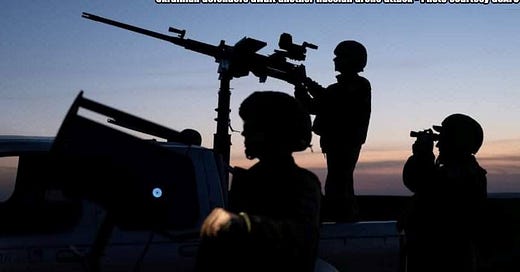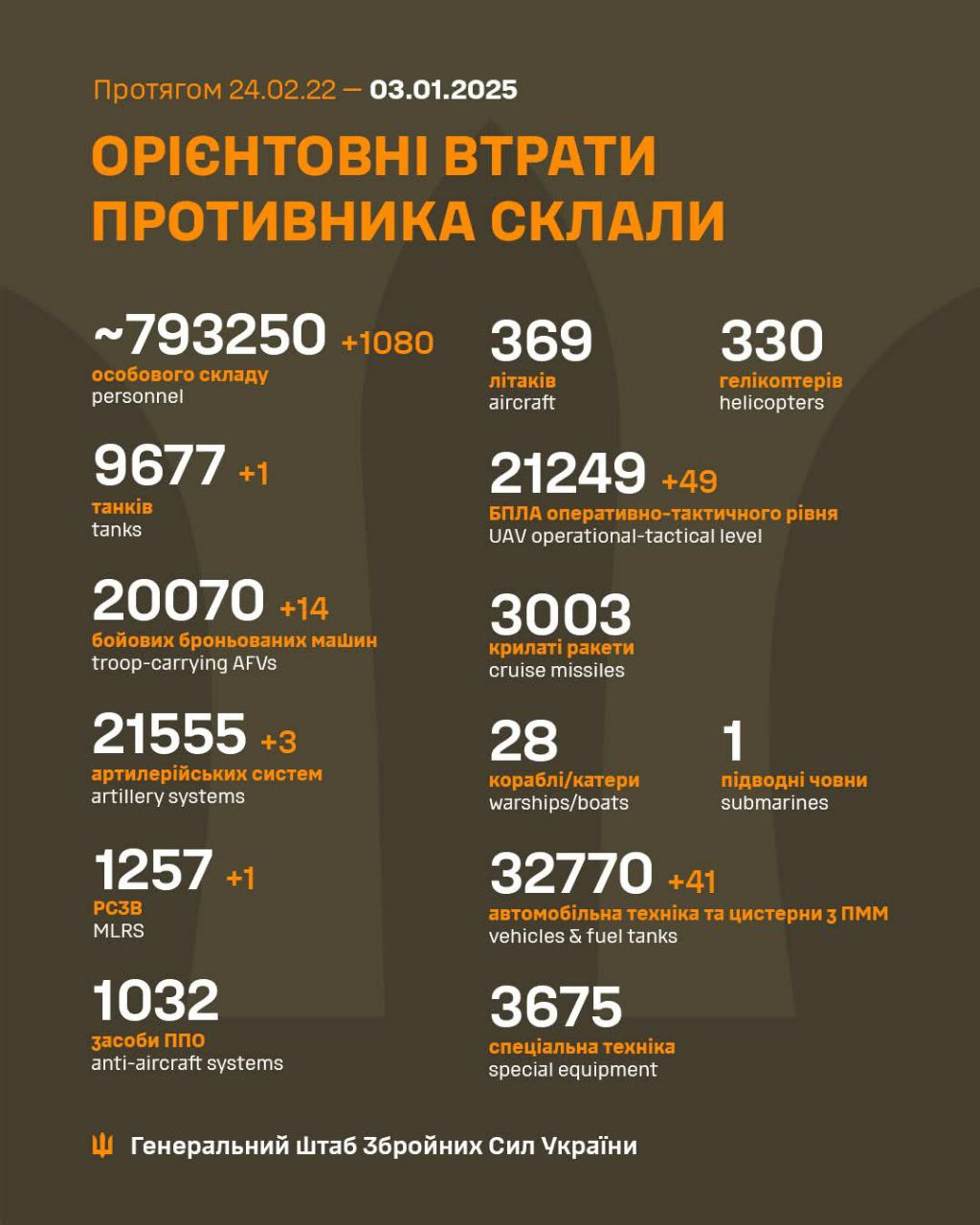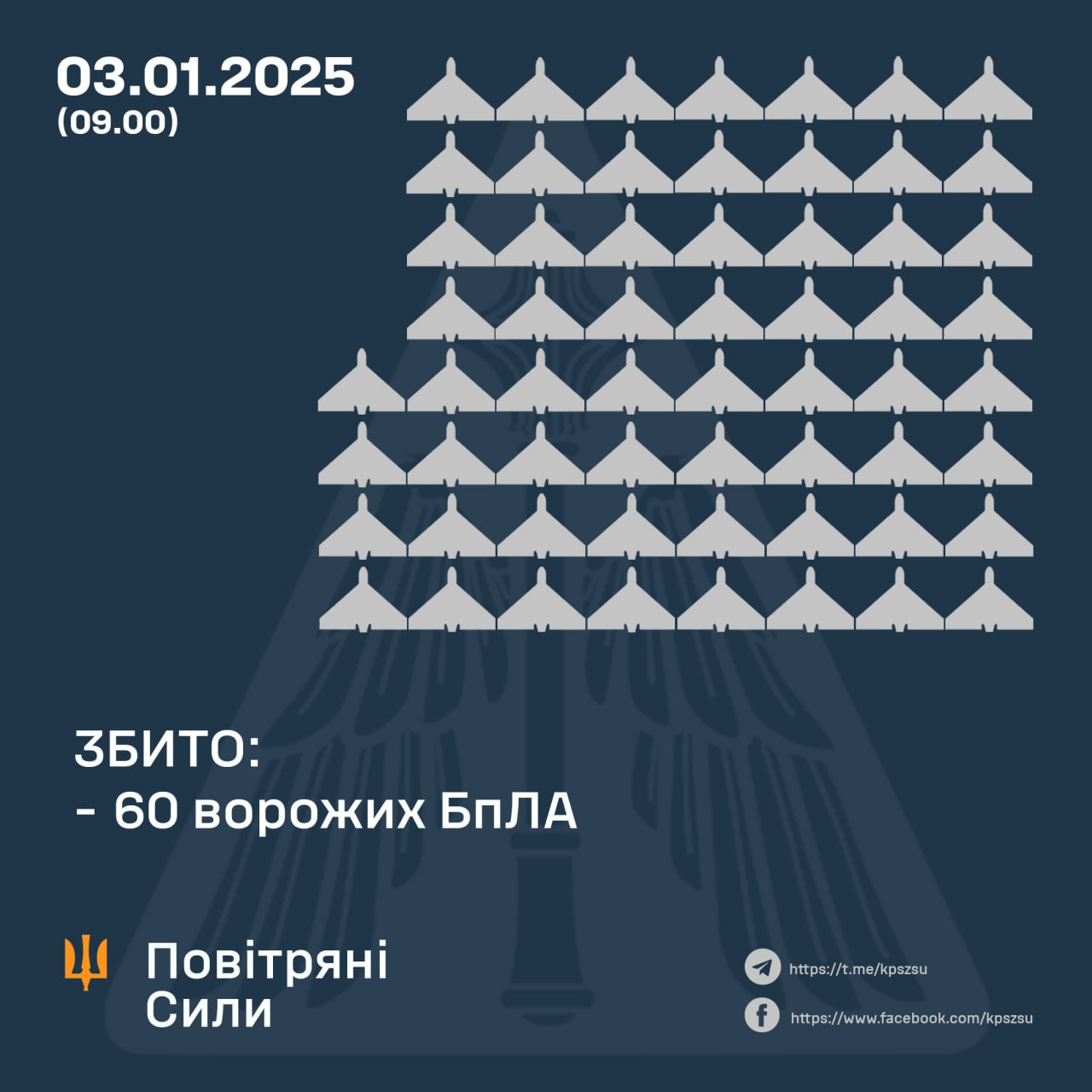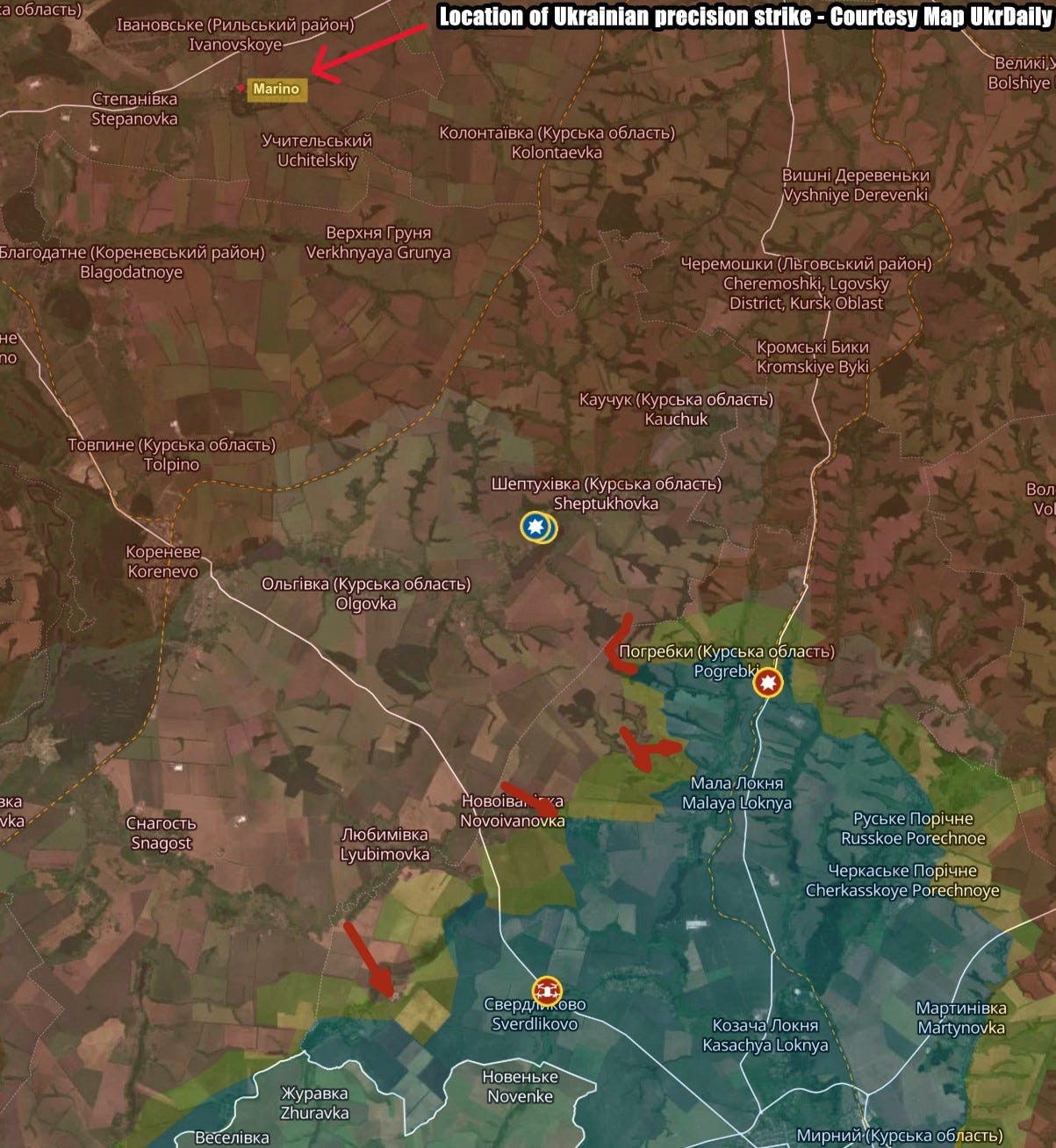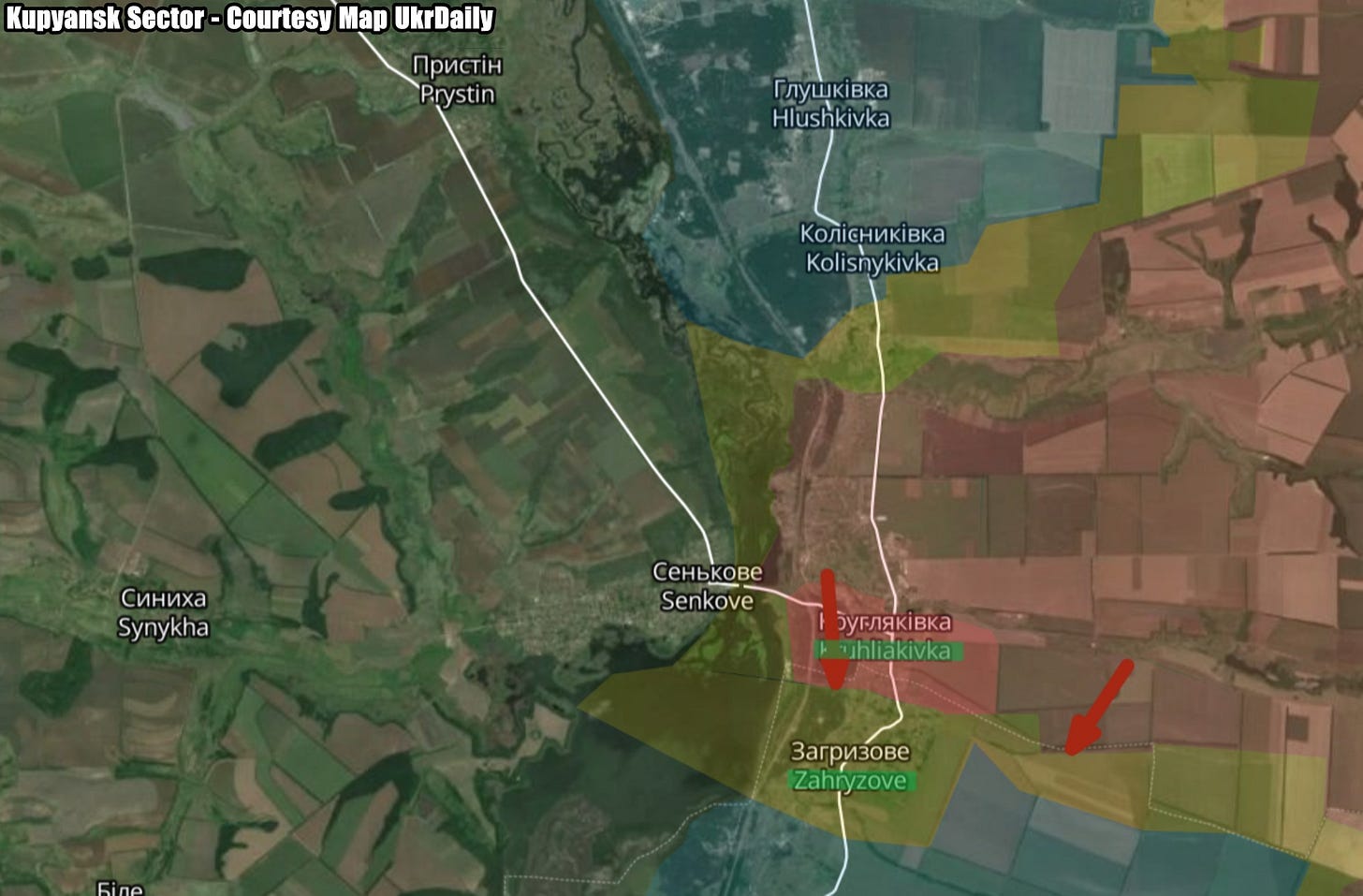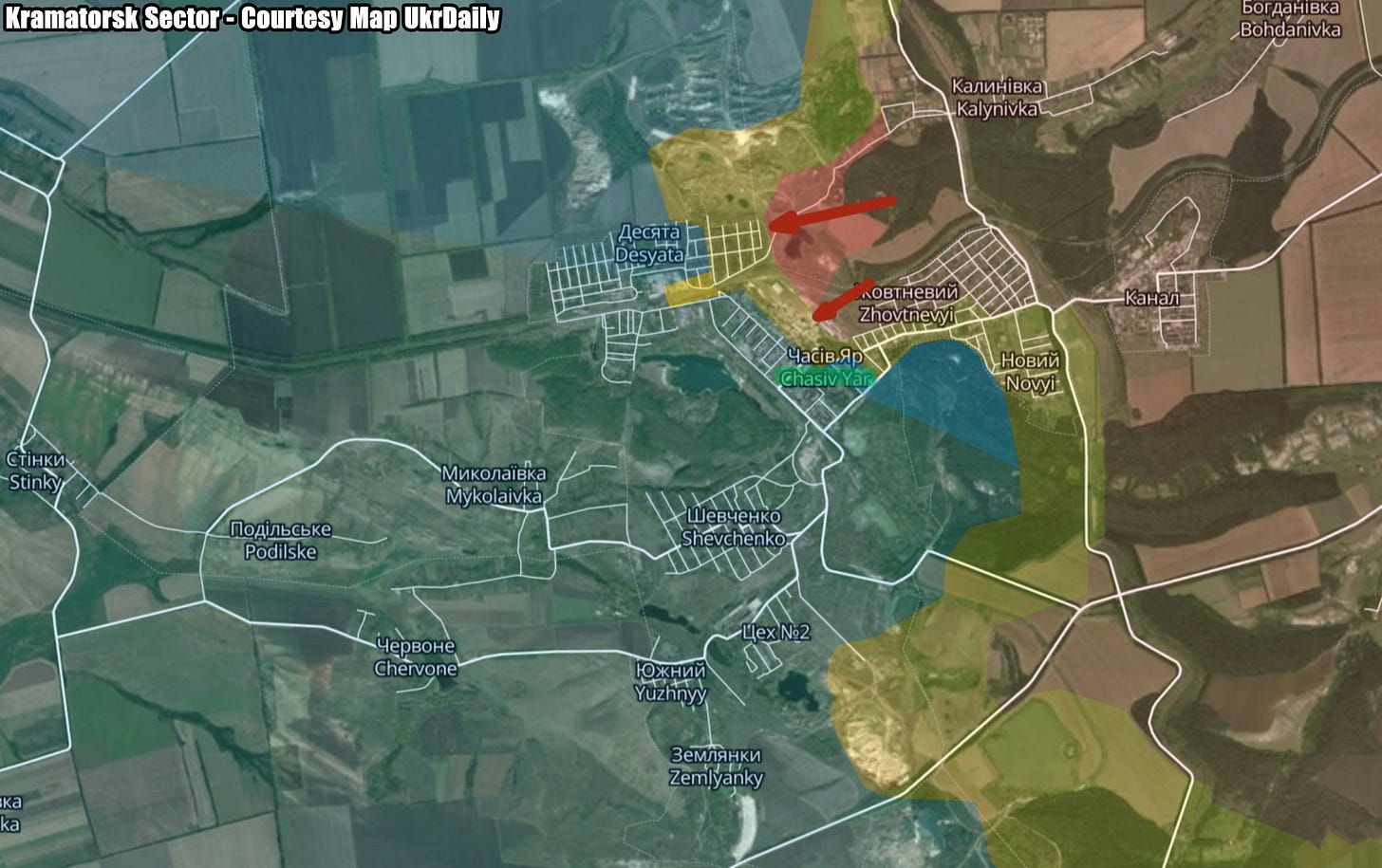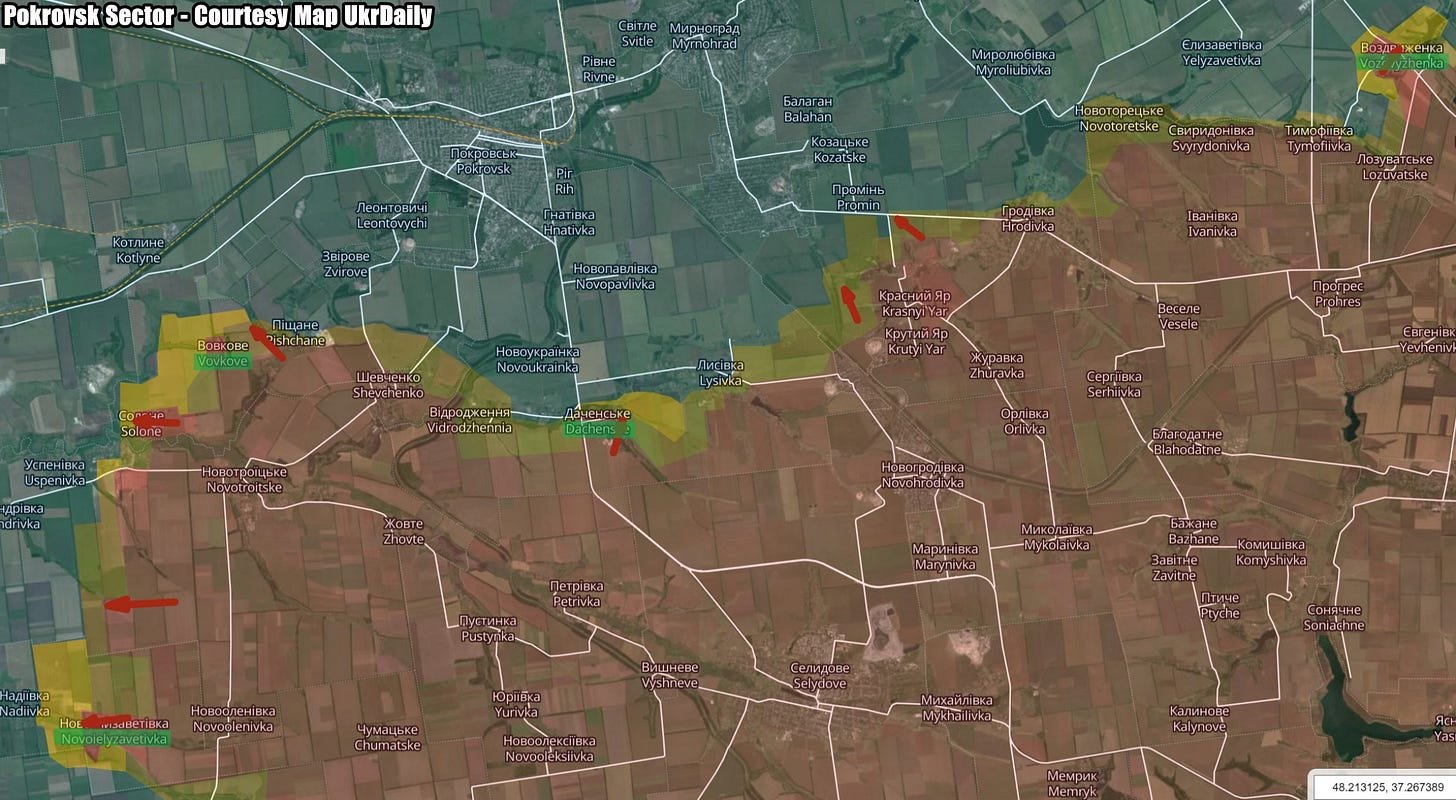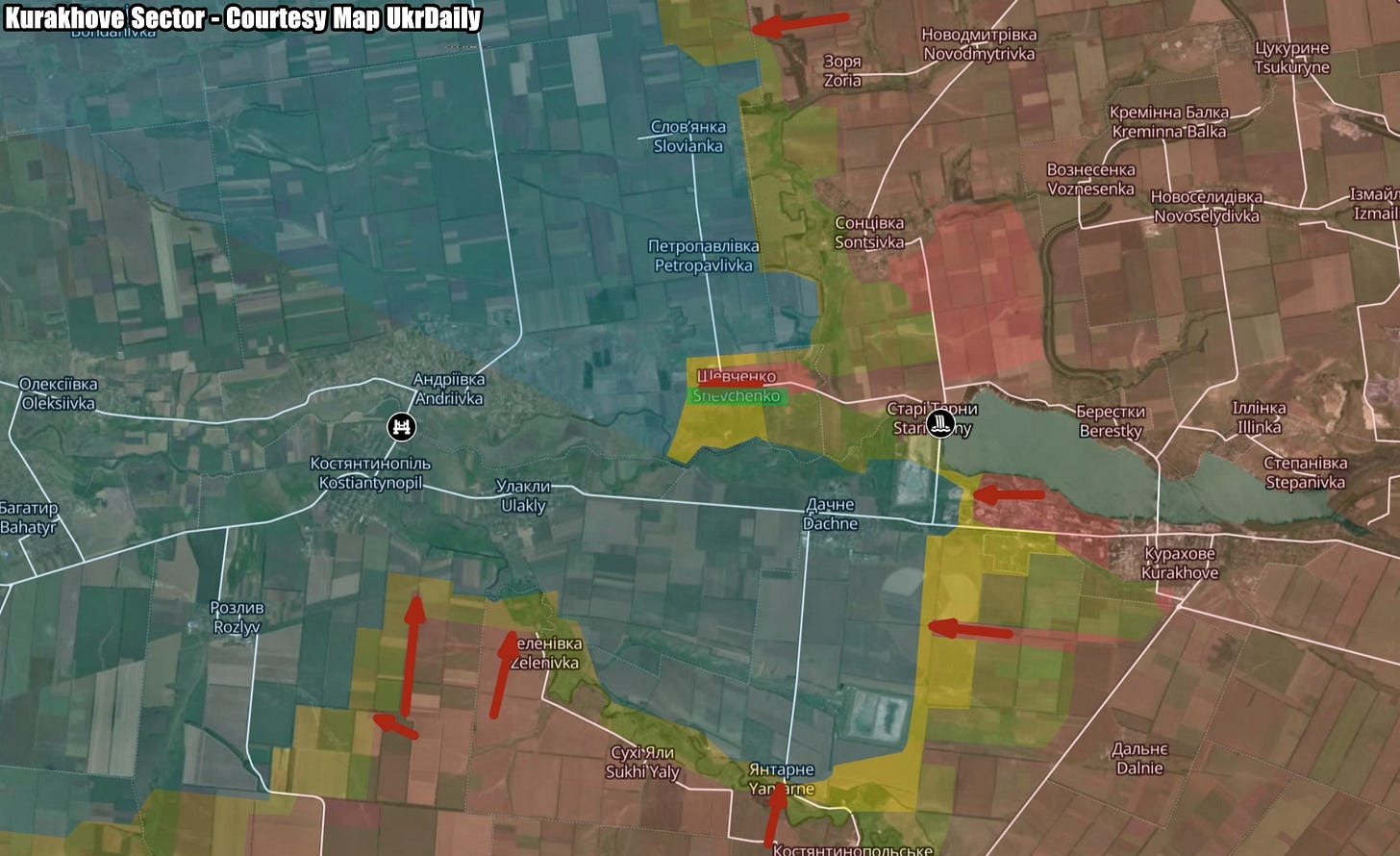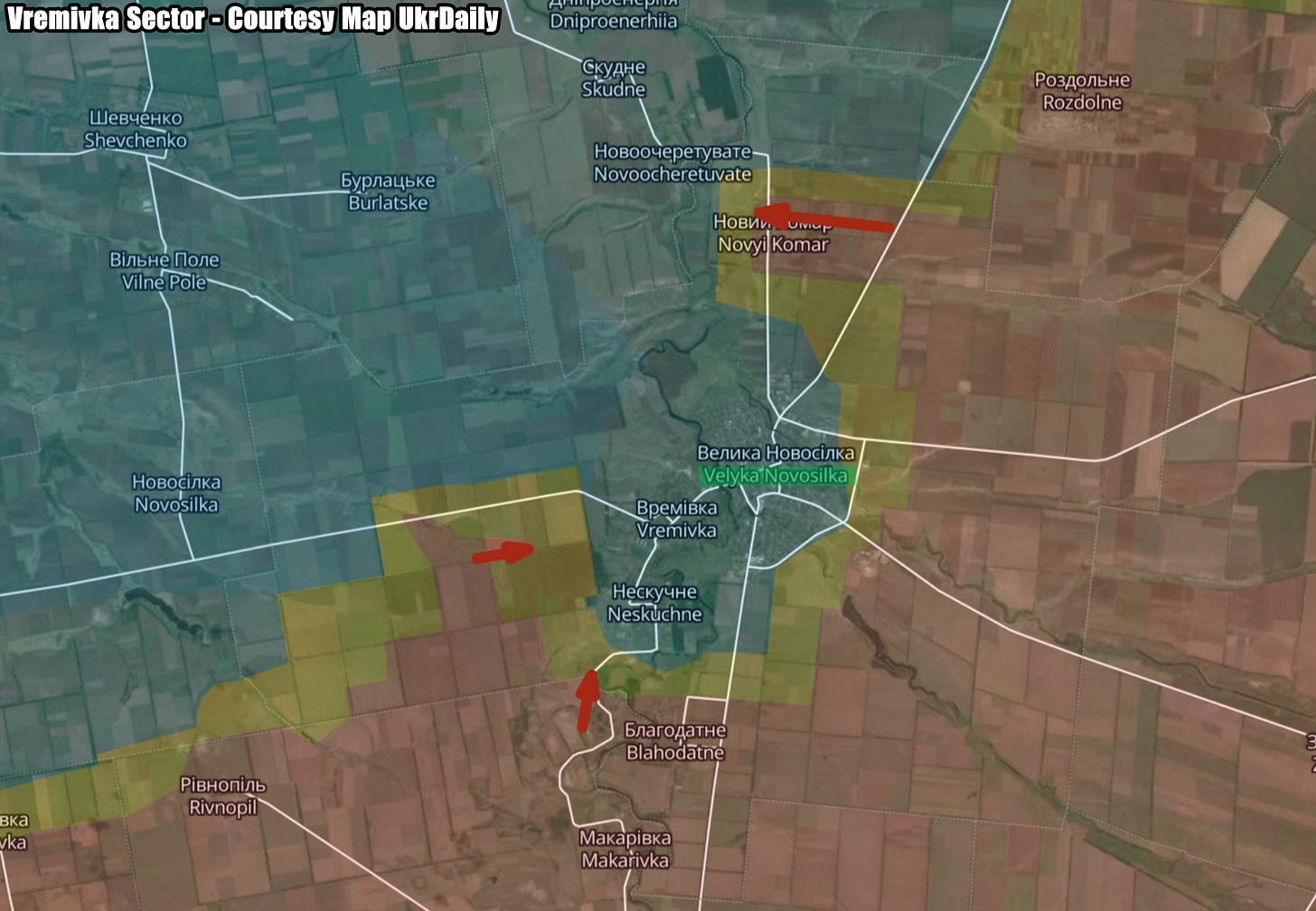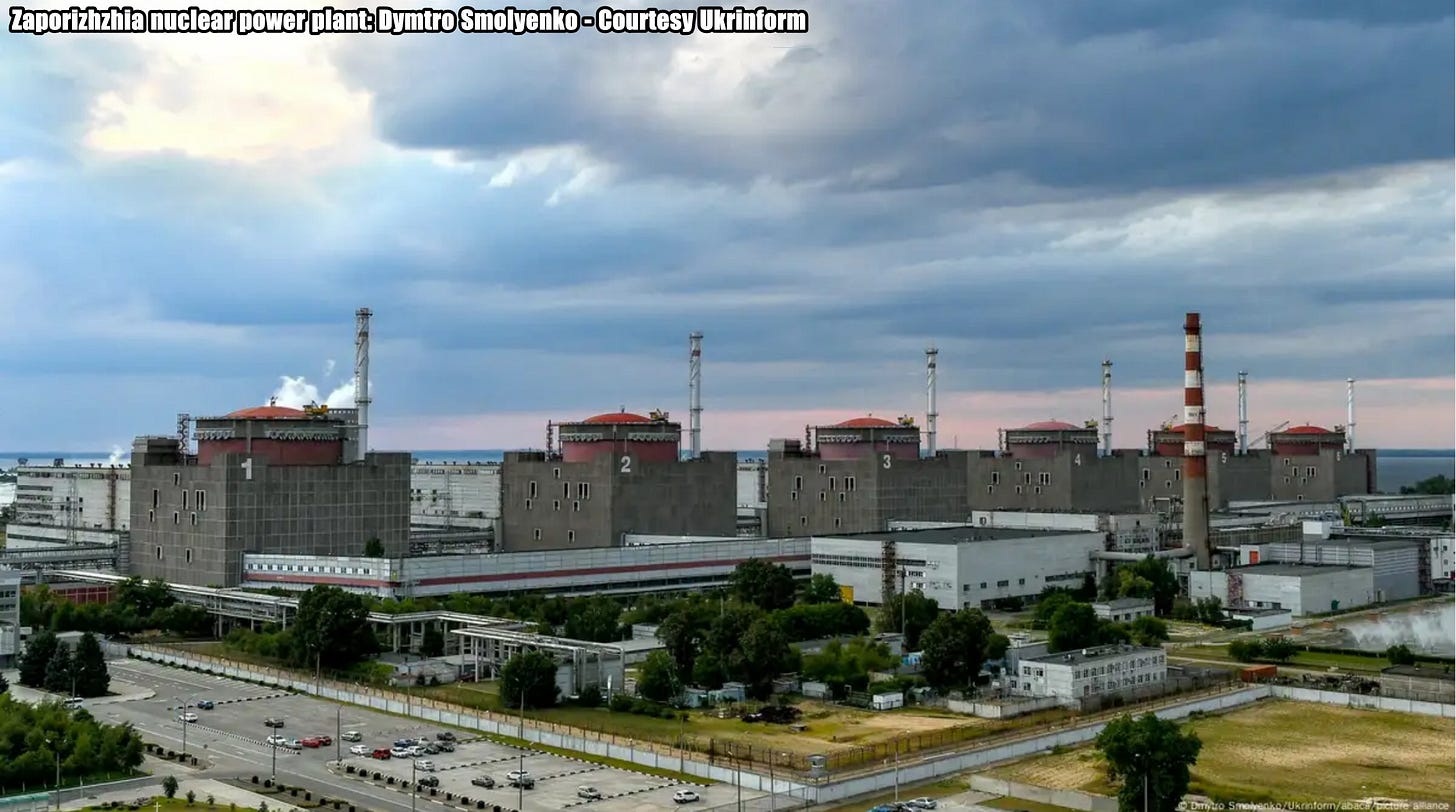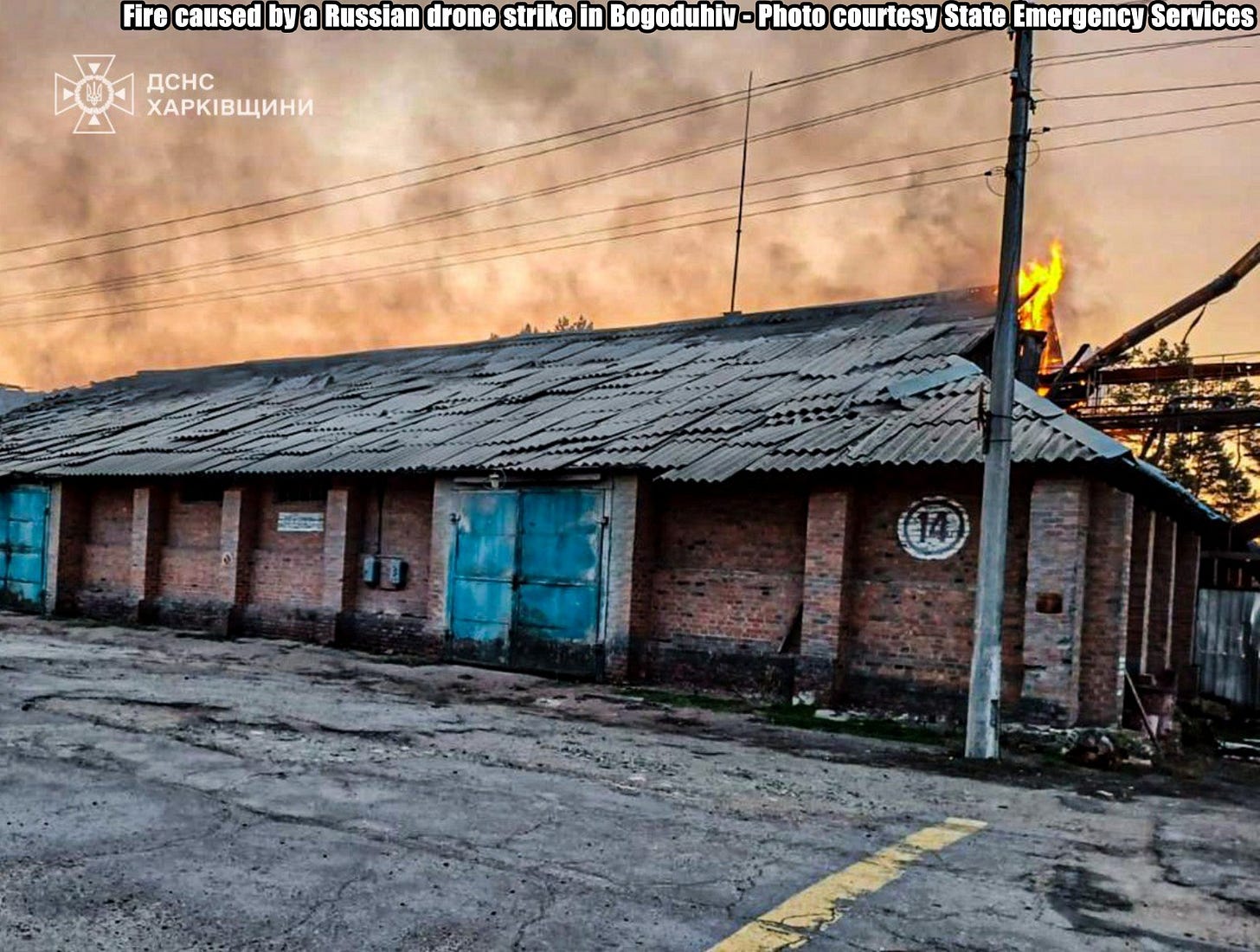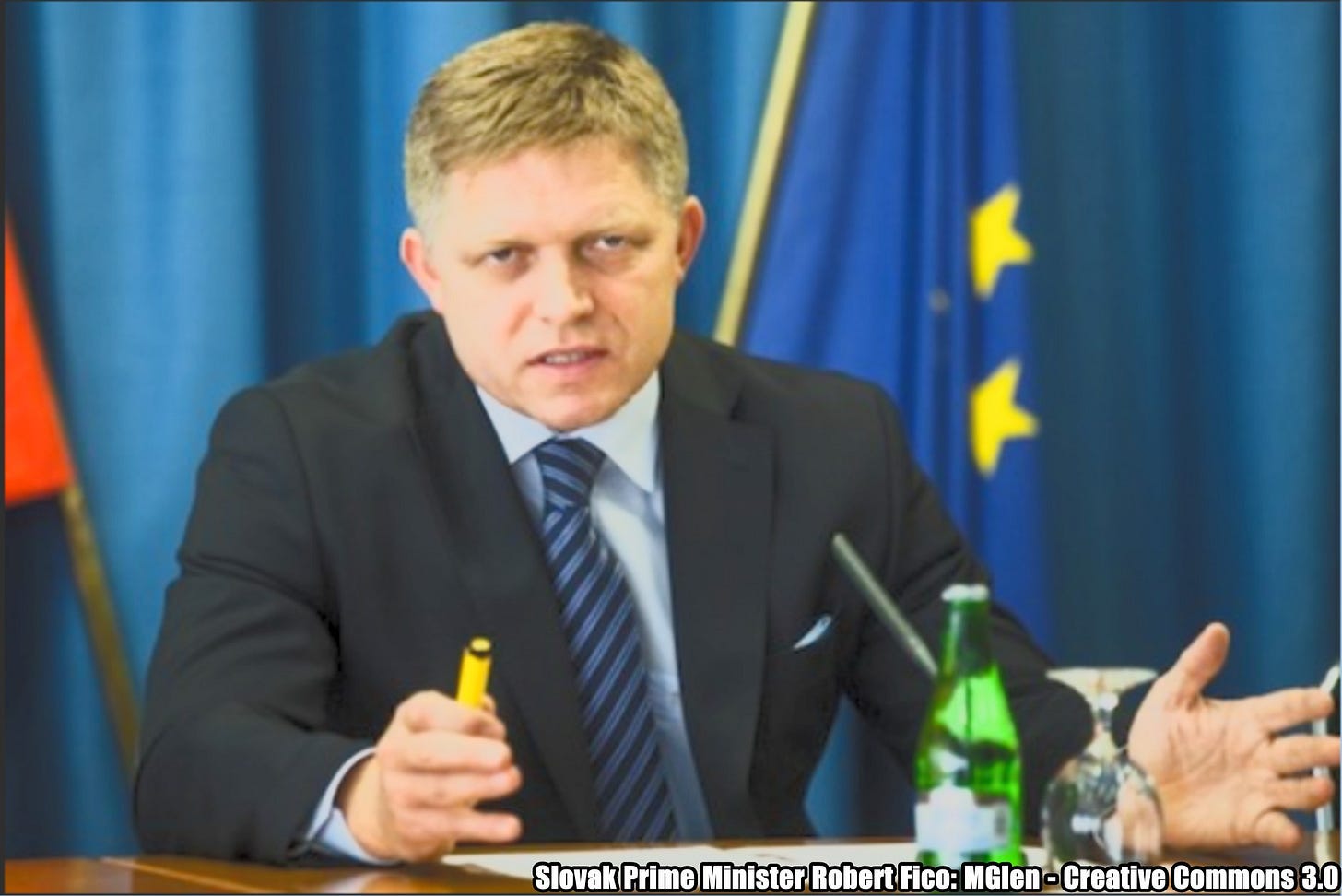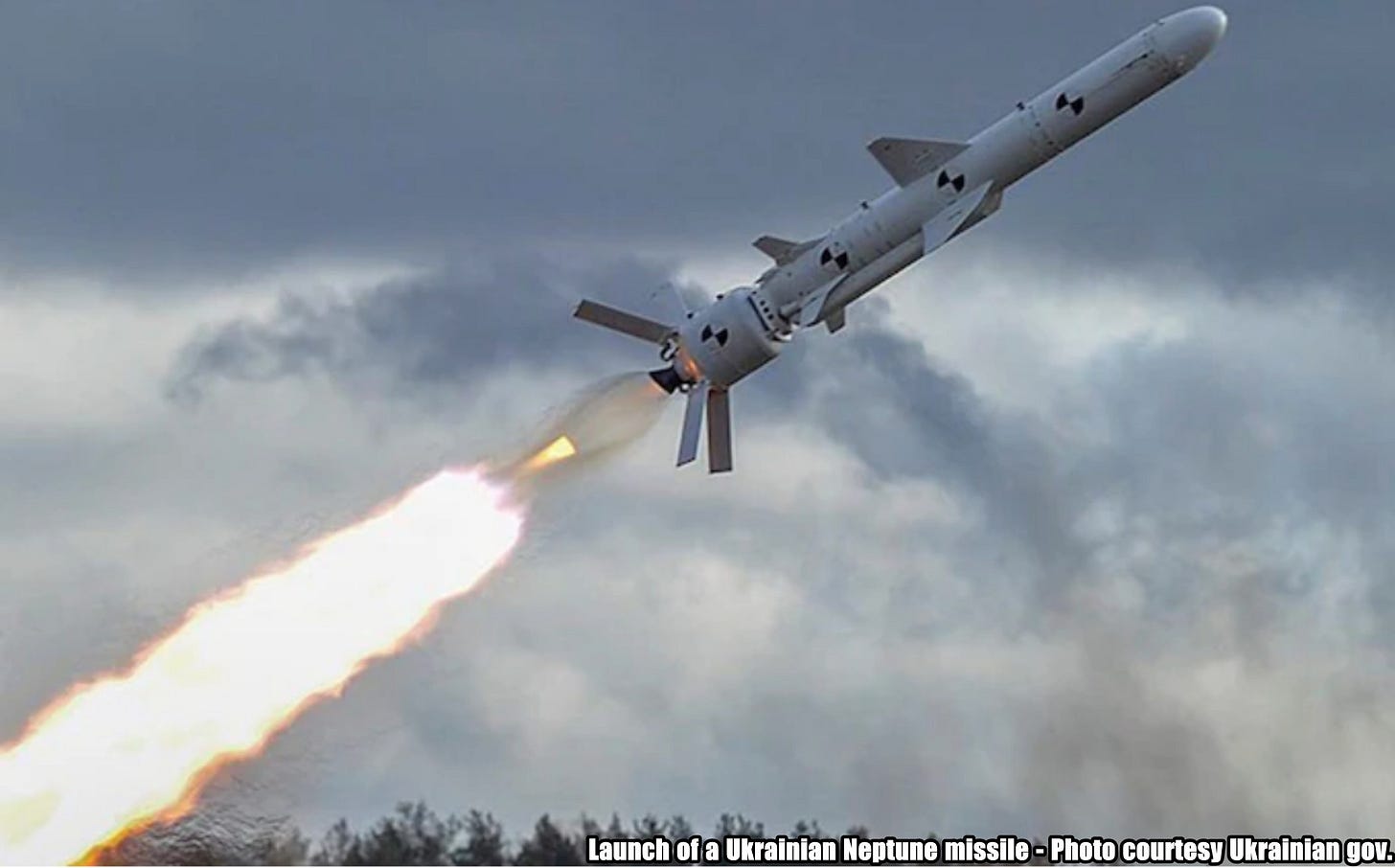Slava Ukraini! In early 2022 I began a Telegram channel aggregating news from a number of sources daily on the war in Ukraine. In June 2023 I began providing a daily draft for the Ukraine War Brief Podcast collecting news from over 70 sources daily, which formed the basis of the script. While the Podcast no longer exists I have continued to make this Brief available for my followers here on Substack for those who wish to keep up with the news from the war.
All the latest news on the Russo-Ukraine War 6 days per week
ALONG THE CONTACT LINE
GSAFU Morning Report
The General Staff of the Armed Forces of Ukraine in its Operational Information update at 08:00 on stated that day of the full-scale invasion of the Russian Federation against Ukraine had begun.
During the past day, 138 combat engagements took place. Over the past 24 hours, the enemy carried out 2 missile strikes, 52 air strikes and more than 3,800 artillery strikes across the positions of Ukrainian forces and civilians.
At the same time, Ukrainian soldiers continue to inflict losses in manpower and equipment on the occupying troops, exhausting the enemy along the entire front line and continue to disrupt the plans of Russian occupiers to advance deeper into the territory of Ukraine.
Air Force Daily Report
60 ENEMY UAVS SHOT, 26 DRONES FAILED TO REACH THEIR TARGETS (LOCATIONALLY LOST)
➖➖➖➖➖➖➖➖➖
On the night of Jan 3, 2025 (from 9:00 p.m. on Jan 2), the enemy attacked with 93 Shahed attack UAVs and simulator drones of various types from the directions of Bryansk, Millerovo, Orel - Russia.
The air attack was repelled by aviation, anti-aircraft missile troops, electronic warfare units, and mobile fire groups of the Air Force and Defense Forces of Ukraine.
As of 09:00, it was confirmed that 60 Shahed attack UAVs and drones of other types were shot down in Poltava, Sumy, Kharkiv, Kyiv, Chernihiv, Cherkasy, Zhytomyr, Donetsk, and Dnipropetrovsk regions.
Due to the active countermeasures of the Defense Forces, 26 enemy drones were lost in location (without negative consequences), and one was in the air.
As a result of the Russian drone attack, several strikes by strike UAVs on private enterprises and apartment buildings in the Donetsk and Chernihiv regions were recorded. The downed "shaheeds" also caused damage in the Kyiv region: private houses and cars were damaged in several areas. Unfortunately, there is a death and injuries.
The Russian Border Incursion
The Institute for the Study of War (ISW), a US based think tank, in its Jan 2 Russian Offensive Campaign Assessment reported that Ukrainian and Russian forces continued combat engagements in Ukraine's salient in Kursk Oblast on Jan 1 and 2, but there were no confirmed changes to the frontline. A Russian milblogger claimed that Russian forces advanced near Makhnovka (southeast of Sudzha), but ISW has not observed confirmation of this claim. Russian milbloggers claimed that Russian forces attacked in the forest areas of Sudzhansky Raion and near Leonidovo (southeast of Korenevo) and Kurilovka (south of Sudzha) on Jan 1 and 2. The Russian Ministry of Defense (MoD) claimed that Russian forces repelled six Ukrainian counterattacks in Kursk Oblast on January 1.
A Kremlin-affiliated milblogger claimed that Russian forces have retaken about 40 to 50 percent of Kursk Oblast and that Ukrainian forces control around 500 to 600 square kilometers. ISW assesses that Ukrainian forces are operating in roughly 585 square kilometers in Kursk Oblast and that Russian forces are confirmed to have recaptured roughly 483 square kilometers of territory - roughly 39 percent of the Ukrainian salient in the area. The milblogger added that Ukrainian forces have contained Russian advances near Pogrebki (northwest of Sudzha).
Ukraine's Main Military Intelligence Directorate (HUR) reported on Jan 2 that North Korean forces are continuing to suffer casualties in combat operations in Kursk Oblast and that the Russian military command transferred North Korean forces to positions near Ulanok, Fantasiyevka, and Cherkasskaya Konopelka (all southeast of Sudzha).
Elements of the Russian 810th Naval Infantry Brigade (Black Sea Fleet [BSF]) and 56th Airborne (VDV) Regiment (7th VDV Division) are reportedly operating in the Kursk direction.
Ukraine strikes Russian command post in Kursk Oblast.
The Ukrainian Armed Forces conducted a precision strike on a Russian army command post in Maryino, Kursk Oblast, The Kyiv Independfent reported citing Ukraine's General Staff on Jan. 2.
"These attacks are primarily carried out to weaken Russia's ability and willingness to carry out terrorist acts against Ukrainian civilians," the General Staff said, adding that "all necessary measures" were taken to minimize risks to civilians in the vicinity of the strike.
It did not specify the type of weapon used in the attack.
The strike targeted the 810th Russian Brigade, resulting in significant losses, according to Andrii Kovalenko, head of Ukraine’s counter-disinformation center.
The Khortytsia operational-strategic group
(Responsible for the northeastern part of Ukraine. )
Kupyansk Sector: In this sector over the last day Russian forces advanced south from Kruhliakivka towards Zahryzove.
Kramatorsk Sector: Russian forces continue attempting to advance north of Chasiv Yar, but Ukrainian defenders regained some lost territory to the south of the town.
The Tavria operational-strategic group
(Responsible for the central-eastern and southeastern part of Ukraine.)
Pokrovsk Sector : Russian forces conducted 27 assaults in this sector in the past 24 hours advancing marginally in the vicinity of Vozdvyzhenka, Dachenske, Vovkove and Novielyzavtivka.
Kurakhove Sector: Russian forces advanced marginally westward capturing most of the village of Shevchenko.
Vremivka Sector: Russian forces continue to press in three directions attempting to encircle the Ukrainian stronghold of Velyka Novosilka.
TEMPORARILY OCCUPIED TERRITORIES
Russia intends to illegally operate occupied ZNPP
The Institute for the Study of War (ISW), a US based think tank, in its Jan 2 Russian Offensive Campaign Assessment reported that Russia intends to issue Russian licenses for the operation of all six of Zaporizhzhia Nuclear Power Plant's (ZNPP) reactors by 2028 as part of Moscow's long-term efforts to legitimize its illegal occupation of the plant and exploit Ukraine's energy supplies.
ZNPP occupation director Yuriy Chernichuk announced on Jan 1 that Russian occupation officials intend to obtain licenses from Moscow to operate all six of the ZNPP's nuclear reactors by 2028, obtaining a license for the operation of the first reactor by the end of 2025.
Ukrainian licenses for the first ZNPP reactor will expire in December 2025, and the Kremlin claimed in 2022 that all licenses would be valid until their expiration or until the ZNPP received Russian licenses. Chernichuk also announced on Jan 2 that occupation officials plan to replace the ZNPP's foreign-sourced equipment with Russian-made equipment, that Russia will use the ZNPP reactors to supply energy to all of occupied Ukraine, and that Russia will also use the ZNPP to generate power for Russian regions west of the Ural mountains.
Chernichuk's stated goal of acquiring licenses for Russia to operate ZNPP's nuclear reactors signals Moscow's long-term territorial intentions and aligns with Russia's broader efforts to de facto legitimize Russia's occupation of the ZNPP and further steal Ukraine's critical energy supply.
THE HOME FRONT
Russian attack on Kyiv region leaves one dead, four injured
Russia attacked the Kyiv region with drones on the night of January 3, 2025. As a result of drone debris falling, four people were injured, and one person was killed, according to the Kyiv Regional Military Administration. RBC Ukraine reported.
The acting head of the Kyiv Regional Military Administration, Mykola Kalashnyk, informed that a truck driver was killed in one of the regions by debris from a downed drone. The man died at the scene.
"In another area, debris from a downed drone fell on a private house, causing a roof fire. Three people were injured. A woman born in 1957 experienced an acute stress reaction. A 16-year-old boy sustained a cut. He will be hospitalized at a children's hospital. His father suffered cuts to his legs," the report said.
In another settlement, a woman was injured on the street. She was hospitalized at a local hospital, and all necessary medical assistance was being provided.
At the end of the post, Mykola Kalashnyk emphasized that the air raid alert in the region continues. He urged all residents to remain in shelters during the alarm.
Notably, today, on January 3, Russian drones also attacked Ukraine's capital, Kyiv. As a result of air defense efforts, drone debris fell in the Holosiivskyi and Darnytskyi districts.
In the second case, a fire broke out in a private house due to parts of the drone falling. The fire was quickly extinguished. Fortunately, there were no casualties in Kyiv.
Russian forces shell Kramatorsk, destroy part of apartment building
On Jan. 3, Russian forces shelled Kramatorsk in Donetsk Oblast, striking a four-story apartment building, Ukraine’s State Emergency Service (SES) reported.
According to rescue officials, there were no casualties or injuries. The attack destroyed part of the building’s section from the fourth to the second floor and caused a fire that spread across 370 square meters.
SES evacuated five residents from an adjacent section of the building and extinguished the fire. Rescue operations at the site have been completed, the agency stated.
RUSSIAN WORLD
Berlin sees signs of Russia’s war collapse in 2025
An "internal analysis" conducted by the German government has revealed some signs pointing to a possible shift toward an end of the Russian war against Ukraine in 2025, Bild reported on Jan. 3.
This is seen as a possible scenario, with the deteriorating economic situation in Russia seen as a major factor. Rising interest rates and food prices, along with a more than 20% drop in the value of the ruble against major currencies, indicate a deepening crisis in the country.
The three-shift operation of Russia's military-industrial complex can no longer hide the crisis in other industries. If in 2024 economic growth was just under 4%, in 2025 it is expected to be around 1%.
The preparation of the Russian presidential administration for the "post-war" election campaign to the State Duma, which will be held in September 2026, could be considered another sign of the possible end of the war.
At the same time, Ukrainian President Volodymyr Zelenskyy believes that Russian dictator Vladimir Putin is trying to avoid direct talks with Ukraine by all means.
"He is clinging to every moment to avoid negotiations with me. And this is the story - in principle he does not want any dialogue," Zelenskyy said, adding that direct talks between Russia and Ukraine would be a loss for the Kremlin.
On Dec. 29, Russian Foreign Minister Sergey Lavrov said that Moscow would not participate in the Peace Summit “in any format”.
“I have explained many times that we are not going to participate in the 'peace summit' even if we receive an invitation,” he said, claiming that Kyiv would use this invitation “only to give Moscow an ultimatum.”
Russian Gas Halt Leaves Transnistria Without Heating Amid Winter Freeze
Residents of the breakaway Moldovan region of Transnistria were left without centralized heating and hot water on Wednesday after Russian gas shipments via Ukraine were halted, The Moscow Times reports citing the local energy company Tirasteploenergo.
Heating and hot water services were suspended at 7:00 a.m. local time due to the “temporary cessation of gas supplies” to the company’s heat-generating facilities, Tirasteploenergo said in a statement. Exceptions were made for healthcare facilities and residential care institutions.
The shutdown followed Ukraine’s decision not to renew a five-year gas transit agreement with Russia starting on Jan. 1. Ukrainian Energy Minister German Galushchenko called the cutoff a “historic event” and said that “Russia is losing its markets and will suffer financial losses.”
“Restarting the heating system is a complex technical process,” Tirasteploenergo said Wednesday, adding that restoring heating and hot water could take up to 14 days and require access to customers’ homes. “Understanding the importance of uninterrupted service, we are making every effort to resolve the situation as quickly as possible.”
Among a list of recommendations to customers, the company suggested sealing gaps in windows and balcony doors to retain heat, as well as “gathering all family members in a single room while temporarily closing off unused spaces.”
The temperature in Transnistria’s capital city of Tiraspol is set to plunge to minus 1 degree Celcius on Wednesday night.
Residents were also advised to use electric heaters and limit energy use to stay warm. Energy authorities urged caution to prevent fires and electrical system overloads.
Transnistria declared a 30-day economic emergency last month in anticipation of the energy shortage. Moldova also implemented its own state of emergency in the energy sector as fears mounted over the potential humanitarian impact of reduced gas supplies during the winter months.
INTERNATIONAL NEWS
Slovakia may cut aid to Ukrainian refugees over Russian gas transit halt
Slovakia could reduce aid for Ukrainian refugees in response to Ukraine’s decision to terminate Russian gas transit through its territory, Slovak Prime Minister Robert Fico said on Jan 2 The Kyiv Independent reports.
While Fico said that Slovak households would not face energy shortages, he said Slovakia stands to lose €500 million ($513 million) annually in transit revenue.
Ukraine terminated Russian natural gas transit through its territory on Jan. 1. Kyiv repeatedly warned it would not renew the transit agreement to avoid financing Russia’s war.
Fico criticized Ukraine's stance, saying Ukraine "dared to complain about Bratislava's consideration of retaliatory measures."
"On behalf of Smer (the ruling party), I announce that we are ready to negotiate and agree in a coalition to cut off electricity supplies and significantly reduce support for Ukrainian citizens staying in the territory of the Slovak Republic," he added.
The announcement follows Fico’s earlier threats to cut off electricity exports to Ukraine amid escalating blackouts caused by Russian attacks on its energy infrastructure.
He also confirmed that Slovak, Ukrainian, and European Commission representatives will meet on Jan. 7 in Brussels to discuss the shutdown, reportedly at Kyiv’s request.
Despite EU efforts to reduce dependence on Russian fossil fuels, Slovakia remains reliant on Russian gas under a long-term contract with Russia's state-owned energy giant Gazprom.
Switching to alternative supply routes could cost Slovakia an additional €220 million ($229 million) in transit fees.
MILITARY & TECH
Ukraine’s Trembita missile is about to become very important
With just three weeks left before US president-elect Donald Trump takes office, the administration of US president Joe Biden is rushing to supply Ukraine with as many weapons as possible. Biden is obviously worried that the impulsive, pro-authoritarian Trump will do what he has threatened to do – and reduce or end US aid to Ukraine. David Axe writes in The Telegraph.
The Ukrainian government isn’t taking any chances. It’s hurrying to develop weapons it can build, pay for and use all on its own – with or without the unreliable, unpredictable Americans.
Ukraine’s new Trembita cruise missile might be the biggest symbol of its drive for firepower autonomy. Anticipating the day when it will run out of bespoke American munitions – most notably, 190-mile-range Army Tactical Missile System (ATACMS) ballistic missiles – Ukraine is getting ready to build Trembitas and other long-range deep-strike munitions. Lots of them.
Just seven feet long and weighing 200 pounds, the ramp-launched Trembita isn’t much to look at. Like a miniature modern version of Nazi Germany’s V-1 buzz bomb – aka the “doodlebug” – the Trembita combines a loud pulse jet engine with a simple structure – tube-shaped fuselage and square wing – and simple guidance. GPS, in this case.
That simplicity lends the Trembita its best feature: its low cost.
The basic Trembita, under development since 2023, costs only $10,000. It ranges just 90 miles with a 40-pound warhead. PARS, the Ukrainian firm that builds the Trembita, is working on a bigger, farther-flying version that should be able to reach Moscow, 400 miles from the Ukrainian border. That version, which should be ready in around a year, would undoubtedly cost more than $10,000 – but would still be potentially the cheapest deep-strike munition in the world. An ATACMS costs more than $1 million.
There’s no reason Ukraine can’t acquire thousands of Trembitas, even without foreign budgetary assistance. The same can’t be said of the pricier homegrown deep-strike munitions Kyiv has been working on: Hrim-2 ballistic missiles and Neptune cruise missiles, to name two.
That scale matters. To match the massive Russian bombardment of Ukrainian cities, bases, powerplants and factories – attacks that have killed or wounded thousands of Ukrainians – Ukraine needs to massively scale up its own bombardment of Russian cities, bases, refineries and factories. The small numbers of ATACMS and Storm Shadow/SCALP-EG cruise missiles Ukraine has received from the United States, the United Kingdom and France aren’t adequate for an intensive deep-strike campaign.
And the “several hundred” ATACMS Biden has given Ukraine, according to The New York Times, might be the only ATACMS Ukraine ever gets, if Trump throttles or eliminates US aid as early as this month.
To be clear, the Trembita is no ATACMS, Storm Shadow or SCALP-EG. It lacks the payload of the American munition, the penetrating power of the British and French munitions and the accuracy of all three. Substituting smaller, less precise Ukrainian munitions for bigger, more precise foreign munitions would compel the Ukrainians to reconsider which targets it strikes – and how.
A barrage of Trembitas might work just fine against, say, a sprawling factory complex. It might not work so well against the underground command bunkers the Ukrainians have been aiming their Storm Shadows at.
Relying more on their own weapons, the Ukrainians might have to resort to striking a different set of targets. But at least they could keep striking.
The Biden administration still has a few billion dollars in spending authority to provide new and surplus weapons to Kyiv – and it’s determined to use it. But the munitions the Americans ship in the next few weeks won’t last forever. The Ukrainians know the day is coming when they’ll be … if not alone, more alone.
Russia Changes Tactics in Targeting Ukraine's Energy System With Cluster Munitions
In order to inflict maximum damage to Ukraine's energy system, Russian invaders began using cluster munitions, Defense Express reports.
This was stated by the Minister of Energy of Ukraine Herman Halushchenko on the air of the national telethon.
"The tactics of such attacks have changed, and the weapons have changed. As a rule they are using weapons with cluster munitions to cause maximum damage to the energy system, but now the system is balanced," Halushchenko claimed.
He emphasized that 2024 was the most difficult year for the Ukrainian energy system compared to 2023 and 2022. According to Ukraine's Energy Minister, Russians launched 13 massive attacks between March and December and attacked the energy sector every night throughout the year.
Over the past month, Russia has carried out four massive attacks on Ukraine's energy system, using all types of weapons. However, as Halushchenko noted, Ukraine is "holding its own" and citizens could see this, particularly during the New Year holidays. The energy system is currently working.
"Thanks to the repair campaign, we were able to restore some of the nine gigawatts lost. I will not mention the exact numbers, but the key thing is that the system is balanced today," Halushchenko said.
That’s it for today’s Brief folks if you would like to keep up with events in Ukraine daily please consider subscribing.
Feel free to share this update with your friends. Heroyam Slava!


